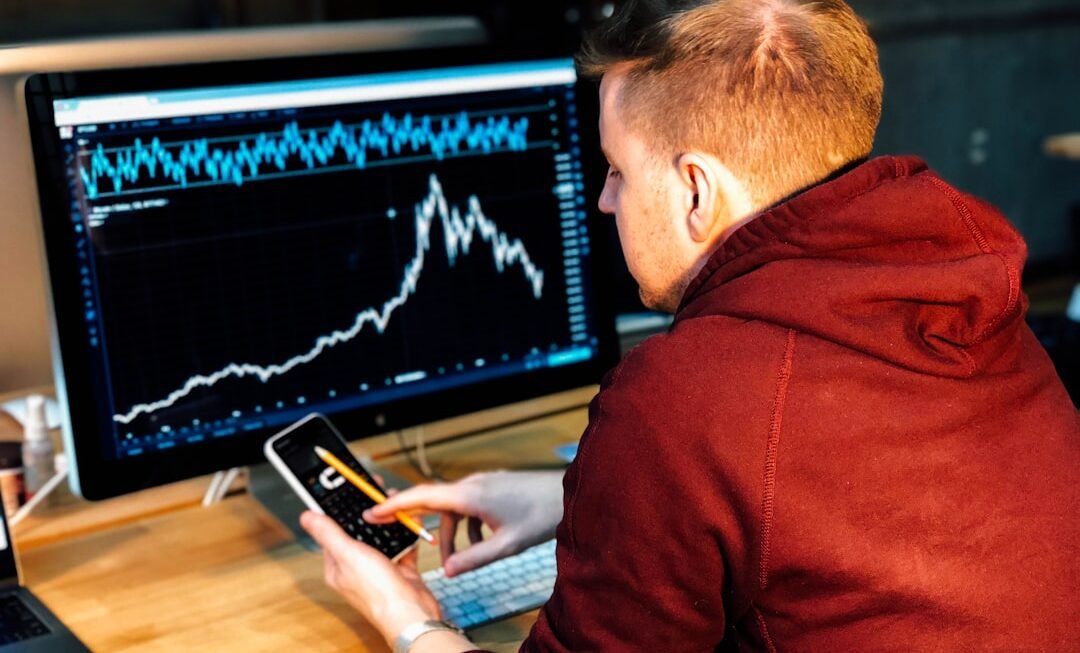As we approach the mid-2020s, automated trading has become an integral part of the financial landscape, revolutionizing how trades are executed across global markets. The advent of sophisticated algorithms and high-frequency trading systems has transformed traditional trading practices, enabling investors to execute trades at lightning speed and with remarkable precision. Automated trading systems leverage complex mathematical models and vast datasets to identify trading opportunities, often making decisions in milliseconds that would take human traders significantly longer.
This shift towards automation is not merely a trend; it represents a fundamental change in the way financial markets operate, driven by advancements in technology and the increasing demand for efficiency and accuracy. In 2025, the landscape of automated trading is characterized by the integration of artificial intelligence (AI) and machine learning, which have further enhanced the capabilities of trading algorithms. These technologies allow for the analysis of massive amounts of data in real-time, enabling traders to adapt to market conditions dynamically.
As a result, automated trading systems are not only executing trades but also learning from past performance to improve future decision-making. This evolution has led to a more competitive environment where speed and accuracy are paramount, compelling traders and institutions to adopt automated solutions to remain relevant in an increasingly complex market.
Key Takeaways
- Automated trading is expected to continue growing in 2025, with advancements in AI algorithms and machine learning playing a key role.
- AI algorithms are increasingly being used in global markets, revolutionizing the way trading is conducted and providing new opportunities for investors.
- Automated trading is impacting traditional trading methods, leading to increased efficiency and speed, but also raising concerns about market stability and fairness.
- Machine learning is becoming essential in automated trading, enabling systems to learn from data and adapt to changing market conditions.
- Regulatory challenges and ethical considerations are emerging as AI-driven trading becomes more prevalent, requiring careful navigation and oversight.
The Rise of AI Algorithms in Global Markets
Enhancing Trading Performance
Hedge funds and institutional investors have increasingly turned to AI-driven strategies to enhance their trading performance, often employing machine learning techniques to refine their models continuously. This shift has not only improved profitability but has also increased market liquidity, as AI algorithms can execute large volumes of trades without significantly impacting prices.
Democratizing Access to Sophisticated Trading Strategies
The proliferation of AI algorithms has democratized access to sophisticated trading strategies that were once the exclusive domain of elite financial institutions. Retail traders can now utilize platforms that offer algorithmic trading tools, enabling them to implement complex strategies with relative ease.
A Shift in Market Dynamics
This accessibility has led to a surge in algorithmic trading among individual investors, who can leverage technology to compete with institutional players. As a result, the market dynamics have shifted, with AI algorithms playing a pivotal role in price discovery and market efficiency.
The Impact of Automated Trading on Traditional Trading Methods
The impact of automated trading on traditional trading methods is profound and multifaceted. One of the most significant changes has been the reduction in the reliance on human intuition and discretion in trading decisions. Traditional traders often relied on their experience and gut feelings to make decisions, but automated systems have introduced a data-driven approach that minimizes emotional biases.
This shift has led to more consistent trading outcomes, as algorithms execute trades based on objective criteria rather than subjective judgment. Furthermore, automated trading has accelerated the pace at which trades are executed. In traditional trading environments, orders could take seconds or even minutes to process, but automated systems can execute trades in milliseconds.
This speed advantage allows traders to react swiftly to market movements, capturing opportunities that may vanish in an instant. However, this rapid execution also raises concerns about market volatility, as large volumes of automated trades can lead to sudden price swings and flash crashes. The infamous Flash Crash of 2010 serves as a stark reminder of the potential risks associated with high-frequency trading and automated systems.
The Role of Machine Learning in Automated Trading
Machine learning plays a crucial role in enhancing the effectiveness of automated trading systems. By employing algorithms that can learn from historical data, traders can develop models that adapt to changing market conditions over time. For example, machine learning techniques such as supervised learning allow algorithms to identify patterns in historical price movements and use these insights to predict future trends.
This capability enables traders to refine their strategies continuously and improve their decision-making processes. Additionally, machine learning facilitates the development of more sophisticated risk management techniques within automated trading systems. Algorithms can analyze various risk factors and adjust trading strategies accordingly, helping traders mitigate potential losses during adverse market conditions.
For instance, reinforcement learning—a subset of machine learning—enables algorithms to learn optimal trading actions through trial and error, ultimately leading to more robust risk-adjusted returns. As machine learning continues to evolve, its integration into automated trading will likely yield even more advanced strategies that can navigate complex market environments with greater efficacy.
Regulatory Challenges and Ethical Considerations in AI-driven Trading
As automated trading becomes increasingly prevalent, regulatory challenges and ethical considerations have emerged as critical issues for market participants and regulators alike. The rapid growth of AI-driven trading raises questions about market fairness, transparency, and accountability. Regulators are tasked with ensuring that these technologies do not lead to manipulative practices or exacerbate market volatility.
For instance, the use of algorithms that engage in quote stuffing—submitting a large number of orders with no intention of executing them—can distort market prices and create an uneven playing field for traditional traders. Moreover, ethical considerations surrounding data usage and algorithmic decision-making have come to the forefront. The reliance on vast datasets raises concerns about data privacy and security, particularly when sensitive information is involved.
Additionally, there is an ongoing debate about the potential for algorithmic bias—where algorithms may inadvertently favor certain groups or outcomes based on historical data patterns. Addressing these challenges requires collaboration between regulators, industry stakeholders, and technologists to establish frameworks that promote responsible AI usage while fostering innovation in automated trading.
The Future of Automated Trading: Opportunities and Risks
Looking ahead, the future of automated trading presents both opportunities and risks for market participants. On one hand, advancements in technology will continue to enhance the capabilities of automated systems, enabling traders to develop more sophisticated strategies that can adapt to rapidly changing market conditions. The integration of AI and big data analytics will likely lead to new insights and opportunities for profit generation that were previously unimaginable.
Additionally, as more retail investors gain access to automated trading tools, competition will intensify, driving innovation across the industry. On the other hand, the increasing reliance on automation raises concerns about systemic risks within financial markets. The interconnectedness of global markets means that a malfunction or miscalibration in one algorithm could have cascading effects across multiple asset classes and geographies.
Furthermore, as markets become more reliant on automated systems, there is a risk that human oversight may diminish, leading to potential blind spots in risk management practices. Striking a balance between leveraging technology for efficiency while maintaining robust oversight will be essential for navigating the complexities of the future landscape.
The Evolution of Trading Strategies in the Age of AI Algorithms
The evolution of trading strategies in the age of AI algorithms reflects a significant shift towards data-driven decision-making processes. Traditional strategies often relied on fundamental analysis or technical indicators; however, the advent of AI has introduced new paradigms that prioritize predictive analytics and real-time data processing. For instance, sentiment analysis—analyzing social media feeds or news articles—has emerged as a powerful tool for gauging market sentiment and informing trading decisions.
Algorithms can now assess public sentiment towards specific stocks or sectors and adjust trading strategies accordingly. Moreover, hybrid strategies that combine both quantitative and qualitative approaches are gaining traction among traders seeking a competitive edge. By integrating machine learning models with traditional analysis methods, traders can develop comprehensive strategies that account for both numerical data and contextual factors influencing market behavior.
This evolution signifies a departure from rigid rule-based systems towards more adaptive frameworks capable of responding dynamically to market changes.
Navigating the Future of Automated Trading
As we navigate the future of automated trading, it is clear that this domain will continue to evolve rapidly alongside technological advancements. The integration of AI algorithms and machine learning will further enhance the capabilities of automated systems, enabling traders to harness vast amounts of data for informed decision-making. However, with these advancements come significant challenges related to regulation, ethics, and systemic risk management that must be addressed collaboratively by industry stakeholders.
The journey ahead will require a careful balance between innovation and responsibility as market participants seek to leverage automation while safeguarding against potential pitfalls. As we look towards 2025 and beyond, understanding the implications of automated trading will be crucial for all stakeholders involved in financial markets—from institutional investors to retail traders—ensuring they remain equipped to thrive in an increasingly complex landscape shaped by technology.












